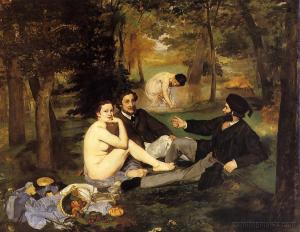The origins of this iconic Pink Panther character
The Pink Panther is an animated cartoon character that was directed by Friz Freleng for the opening sequence of the 1963 film of the same name.
United Artists won an Academy Award in 1964 for the first of their cartoons, hence “The Pink Phink” featured this now world famous crazy member of the cat family – that is coloured pink; he is clearly disagreeing with the colour of a house, that should be decorated by The Little Man: blue or pink, that is now the question?
Whatever the painter paints blue, then gets painted pink to the point that eventually the panther moves in turning everything around the house pink as well, including the white man just as the sun sets.
The Little Man gets a pink makeover in “The Pink Phink” who is a little white moustached man that is actually a caricature of Friz Freleng himself.
The Pink Panther usually remained silent, apart from two cartoons in the original set: Sink Pink and Pink Ice. It was Rich Little who provided the voice later, and modelled his voice on David Niven who starred in the original movie!
However, there were also a great many spinoffs like Crazylegs Crane and in 1978 there was A Pink Christmas and two specials were called Olym-Pinks and Pink at First Sight, whilst in 1984 Pinky and Panky appeared as two sons of the panther.
When classic animation died a death in the 1960s the Pink Panther came as a breath of fresh air being a notable contribution to the animation art form.
The panther was creative and used absurd and surreal themes visually in a pantomime style all alongside the iconic theme tune that everyone recognises and is reminiscent of Charlie Chaplin’s silent movies.
In summary, the Pink Panther appears in the opening and closing credits of the series of films featuring Inspector Clouseau and he generated so much popularity that 124 cartoons were then produced, plus merchandising, comic-books, and a television show all followed the success of this animated creature.
.
Edouard Manet generated laughter and scandal at the Salon des Refuses when his picnic painting stole the show in Paris.
In the French language, “le dejeuner sur l’herbe” literally translates to “the luncheon on the grass” thus, in 1863 it was Manet’s infamous picture (otherwise known as The Picnic) that was to be rejected by the Académie des Beaux-Arts. It was then bitterly savaged by most of the critics at the Salon des Refuses, because the painting was seen as a silly young man’s practical joke.
Manet picture Le Dejeuner sur l’Herbe was thought to be a “shameful open sore” that was not worth exhibiting in this way (according to John Richardson, 1982) because it blended nude women with fully dressed men in a rural setting.
However, Manet in many ways pays tribute to the artistic heritage of Europe with Dejeuner because other artists had indeed featured dressed men in rural settings, with nude women before. For instance, Edouard Manet was perhaps emulating his favourite Renaissance masters like Giorgione and Raphael, hence both of these Italian artists have paintings in the Musee du Louvre and were the most likely inspiration for “Dejeuner” which clearly makes a reference to classical antiquity, but this time with fully-clothed men in contemporary dress!
Four people are depicted in Le Dejeuner and they are all outside and contained within a woodland arch, hence, geometrically the picture is very well organized: horizontal legs can be seen on the grass, there are vertical tree trunks, and the lady bending in the background (above centre) is at the tip of a triangular structure.
Realistically, the woman bathing appears to be lacking the depth she ought to have in order to be convincing, as she is too large for the perspective; this gives the impression that the scene is more like a photographic studio or movie set, rather than the great outdoors – even though this was probably deliberate, it managed to confuse many of the artisan critics in nineteenth-century Paris.
Beautiful oppositions are clearly a part of this masterpiece: old and new, real and imagined, urban and rural, naked and dressed.
The artist played with his audience, thus the brutally contrasted light with darker tones is for visual effect and this makes Manet’s characters seem a little uncomfortable in the woods; why for example, are the men ignoring the women?
Careful attention reveals finer details in Le Dejeuner sur l‘Herbe, e.g. there is a small toadstool and some fruit, plus a frog and a tiny bird. Clothing, a basket and bread are all displayed as in any normal still life painting, but it is the contrast of clothing versus nudity that shocked so many and has made Manet’s Picnic such an infamous piece of art work!


Pingback: Jumble Spoiler – 12/04/13 | Unclerave's Wordy Weblog